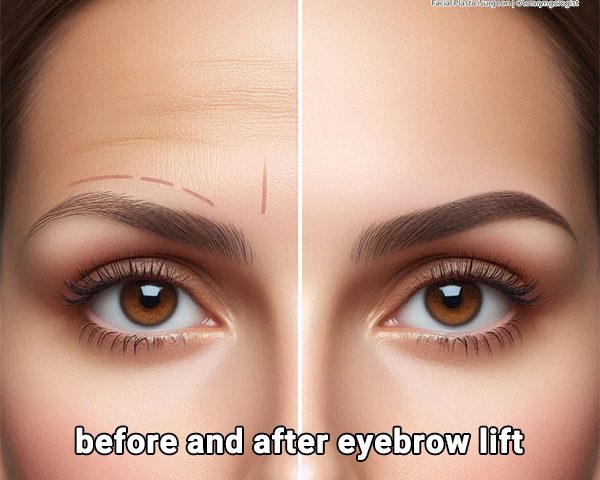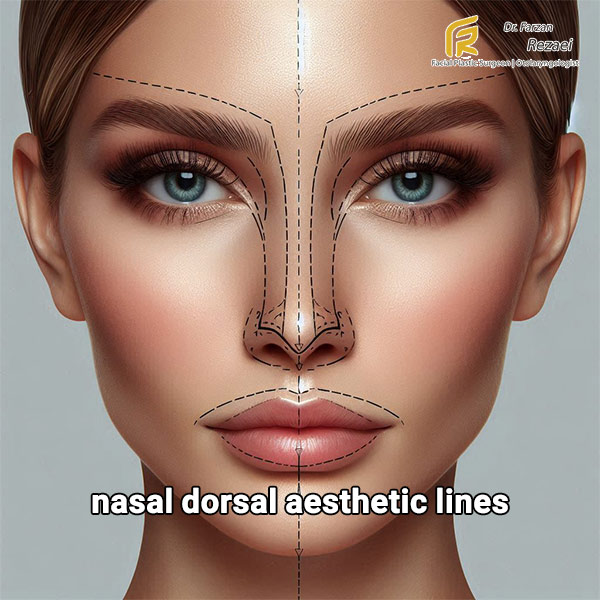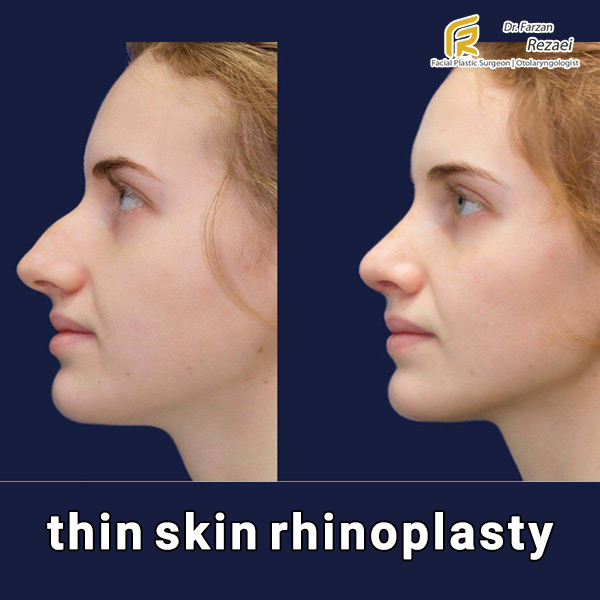Brow lift
As the aging process takes its course, the bodies of individuals gradually experience some negative effects. It becomes more evident when wrinkles and sagging eyebrows appear on the person’s face. Each year, various methods are introduced to address the signs of aging, among which, high-precision endoscopic brow lift yields desirable results. The advancements in technology, prevalent in all fields, have particularly showcased themselves in this area, providing doctors with the opportunity to expand the scope of evaluations using specific methods, ensuring that the eyebrow lift aligns with the aesthetic aspirations. If you are interested in undergoing this process, pay attention to the details provided by Dr. Farzan Rezaei.

Why is brow lift performed?
With the aging process, the muscles and skin of the face gradually undergo deterioration, leading to sagging eyebrows and a reduction in the distance between them. Following this natural process, facial components inherently lack the ability to return to their original state, prompting beauty procedures such as eyebrow and eyelash lifts, especially the endoscopic eyebrow lift, to gain widespread popularity. This procedure, by eliminating facial sagging, restores a sense of youthfulness to the individual.
What is an Endoscopic Brow Lift?
The Endoscopic Brow Lift, like other utilized methods, is a cosmetic procedure in which an individual’s eyebrows are lifted to enhance their appearance. The endoscopic nature of the eyebrow lift has introduced a new approach in this field. Through this process, the appearance of your forehead is improved, and the area around the eyes is also lifted upwards. Essentially, it is suitable for individuals with drooping or unbalanced eyebrows. Endoscopic eyebrow lift, by enhancing your beauty, contributes to an increase in self-confidence. Beauty enthusiasts can achieve their goals through two surgical methods: eyelid surgery and endoscopic eyebrow lift.
Advantages of Endoscopic Brow Lift
In contrast to the traditional eyebrow lift method, the endoscopic eyebrow lift offers numerous advantages, including the following:
1. Reduced Scarring: The incisions made during the eyebrow lift with the endoscope are very small and are well-covered by the hairline. This means that, unlike the large incisions of traditional eyebrow lifts, these incisions will not be visible at all.
2. Fewer Side Effects: When incisions are small, the invasive nature of the procedure is naturally reduced, leading to a decrease in the risk of side effects such as infection or undesirable scarring. This is a valuable feature in endoscopic brow lifts.
3. Improved Recovery Experience: Patients undergoing eyebrow lift with the endoscope report a better experience in terms of the recovery period. In comparison to the traditional method, the recovery period of endoscopic brow lifts is faster, and patients will experience a quicker return to a refreshed, vibrant, and youthful appearance.
Types of Eyebrow Lift Surgery
Depending on your desired outcomes, various methods can be employed. The differences in these approaches entirely depend on the location of the surgical interventions. Below, you will become acquainted with various types:
1. Endoscopic Brow Lift: Multiple incisions are made in this method, creating small cuts behind the individual’s hairline, resulting in a beautifully lifted appearance.
2. Temporal Brow Lift: This method temporarily tilts the eyebrows upwards by creating incisions in the area behind the hairline or temple.
3. Direct Brow Lift: By removing the skin above the eyebrow, this cosmetic procedure bestows beauty upon the individual. This method is often used for individuals with thick eyebrows.
4. Coronal Brow Lift: This type of procedure is performed by creating an incision behind the hairline along the top of the head.
How to Prepare for Brow Lift?
After consulting with the best endoscopic brow lift surgeon in Tehran, you will become familiar with all aspects of this procedure. In the initial examination session, the doctor needs to be aware of the following issues:
1. Your Medical History: As a patient, you are obligated to discuss all specific medical conditions that you have dealt with in the past or are currently managing. Medications, supplements, and herbal remedies are all aspects that the doctor must be aware of.
2. Physical Assessment: To achieve the desired results with an endoscopic brow lift, the best brow lift surgeon in Tehran needs to perform a series of assessments on individuals’ faces, around the eyes, and the presence of wrinkles and folds. In some cases, an evaluation of the patient’s skin is also conducted to determine the extent of the applied changes.
3. Express Your Expectations: Talking about the level of expectation and your goals from cosmetic surgery significantly aids in finding the best method for brow lift.
Preoperative Measures for Brow Lift
1. Avoid Smoking: Refrain from smoking. Tobacco use can prolong the recovery period by reducing blood flow to the skin during the individual’s recuperation.
2. Avoid Aspirin and Anticoagulant Medications: Steer clear of consuming aspirin and anticoagulant medications as they can increase the risk of bleeding. In some cases, herbal supplements may have similar effects on the blood, posing challenges for the surgeon during the procedure.
3. Arrange for a Companion on the Day of Surgery: On the day of surgery, it is necessary to have someone accompany you. This person can take you home after the endoscopic brow lift procedure.
4. Expect the Surgery to be Performed on an Outpatient Basis: This cosmetic surgery is expected to be performed on an outpatient basis in a hospital or clinic setting.
How is Endoscopic Brow Lift Performed?
Endoscopic brow lift is a method that holds a special place among patients due to the reduced scarring after the procedure and the minimal impact on tissues. The sole purpose of this cosmetic procedure is not only to lift sagging eyebrows but also to address various changes, including the elimination of forehead wrinkles, lines between the eyebrows, and crow’s feet around the eyes. By performing multiple and superficial surgeries in the area behind the hairline, a thin tube with a light and a camera are inserted from these locations to observe tissues and muscles. Simultaneously, from another incision site, the best endoscopic brow lift surgeon in Tehran lifts the forehead tissues and secures them in the desired position through faux sutures.
Postoperative Care for Brow Lift
After undergoing the brow lift surgery, your forehead will be loosely bandaged to prevent inflammation. Drain tubes may be inserted, per the discretion of the best endoscopic brow lift surgeon in Tehran, to facilitate the drainage of tissue fluid or blood. It’s important to follow specific instructions during this period to achieve your desired results as quickly as possible.
In the initial days following the endoscopic brow lift, consider the following:
-  Sleep with your head elevated higher than your body.
-  Take medications regularly.
-  Use cold compresses to prevent swelling.
-  Avoid applying pressure to the incision sites.
- Keep in mind that pain and numbness are common symptoms of endoscopic brow lift, and they will gradually subside over time.
If your incisions are closed with intricate bandaging, consult your doctor to have it opened within the next 1 to 3 days. Non-absorbable sutures will need removal after 7 days. Discuss post-surgery activities with the best endoscopic brow lift surgeon in Tehran. Generally, activities such as bathing and washing may increase the risk of surgical site infection as long as sutures are present on your head. Over time, incision lines and bruising resulting from surgery will diminish.
Who is a candidate for a brow lift?
A candidate for a brow lift, also known as a forehead lift, is typically an individual who is bothered by signs of aging in the upper face, particularly sagging or drooping of the eyebrows and forehead skin. The ideal candidate may experience issues such as forehead wrinkles, frown lines, or a heavy, tired appearance in the brow area. Generally, candidates are in good overall health and do not have any underlying medical conditions that could pose a risk during surgery. It is essential for candidates to have realistic expectations and a clear understanding of the potential outcomes of the procedure. Consulting with a board-certified plastic surgeon is crucial to assess individual concerns, determine candidacy, and explore the most suitable approach for achieving the desired rejuvenation of the brow and forehead region.
Is there a nonsurgical way for this procedure?
Yes, there are nonsurgical alternatives to a traditional brow lift that offer rejuvenation without the need for surgery. Non-invasive procedures like Botox and dermal fillers have gained popularity for their ability to address sagging eyebrows and forehead wrinkles effectively. Botox injections work by relaxing the muscles that cause frown lines and forehead wrinkles, providing a subtle lift. Dermal fillers, on the other hand, can be strategically injected to add volume and lift to specific areas, reducing the appearance of sagging brows. These nonsurgical options offer a quicker recovery time, fewer risks, and minimal downtime compared to traditional surgical brow lifts. While the results may be temporary and require maintenance over time, many individuals appreciate the convenience and natural-looking outcomes achieved through nonsurgical interventions. Consulting with a qualified cosmetic professional can help determine the most suitable approach based on individual goals and preferences.
Is it possible to undergo multiple cosmetic procedures alongside a brow lift?
Certainly, you can undergo multiple cosmetic procedures simultaneously with a brow lift. Here are some of the procedures you can have done alongside a brow lift:
Facelift.
Mini facelift.
Neck lift.
Skin resurfacing.
Upper or lower eyelid surgery.
What are the different types of this procedures?
There are three main types of brow lift procedures:
1-The classic lift, also known as an “open brow lift” or “coronal lift,” involves a single continuous incision spanning from ear to ear across the top of the head. Depending on the desired outcome, the incision may follow the frontal hairline to address a high forehead. If necessary, hair trimming may be required for the procedure, while growing out shorter hair can help conceal any resulting scars.
2-The endoscopic lift utilizes several shorter incisions within the scalp. A scope, equipped with a camera, is inserted through one incision to visualize the tissues and muscles on a screen, while adjustments are made using another instrument inserted through additional incisions. During this procedure, tissue adjustment is typically achieved using temporary or permanent stitches or anchors beneath the scalp, designed to secure the tissue in place. Due to smaller incisions, this method is less invasive, resulting in minimal scarring and a shorter recovery period.
3-The limited incision technique combines aspects of both the classic and endoscopic lifts. Although smaller incisions are made, a scope is not used. While this technique does not address the central forehead, it effectively reduces wrinkles at the corners of the eyes (crow’s feet).
Your healthcare provider will discuss the advantages and considerations of each brow lift procedure to help you determine the most suitable option based on your goals.
Brow lift procedure
During the brow lift procedure, techniques are tailored to align with your desired outcome. Your surgeon’s choice of technique dictates where incisions will be placed and the subsequent scarring. Various techniques may be employed:
Endoscopic brow lift: Small incisions behind the hairline allow for the insertion of a slender tube equipped with a camera and light. This enables visualization of underlying muscles and tissues. Through additional incisions, the surgeon elevates forehead tissues and secures them using sutures, screws, or alternative methods before closing the incisions.
Temporal brow lift: Incisions are made discreetly behind the hairline near the temples.
Direct brow lift: Skin above the eyebrows is excised, particularly suitable for individuals with dense eyebrows. This approach is relatively brief and can often be conducted under local anesthesia.
Coronal brow lift: An incision is made behind the hairline, extending across the top of the head. The forehead is then repositioned, and overlapping scalp is removed and sutured together. Not commonly recommended for individuals with high hairlines, thin hair, or predisposition to hair loss.
Hairline brow lift: An incision is made between the forehead’s apex and the start of the hairline. A minimal amount of skin and tissue is removed from the forehead’s apex, rather than from the scalp. This technique can address a high hairline but may result in a visible scar along the hairline, depending on incision placement, scar healing, and hairstyle.
Brow lift surgery typically lasts 1 to 2 hours.




